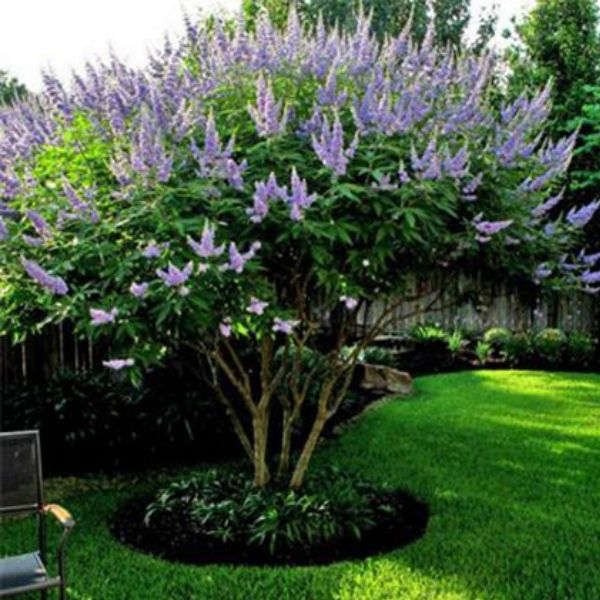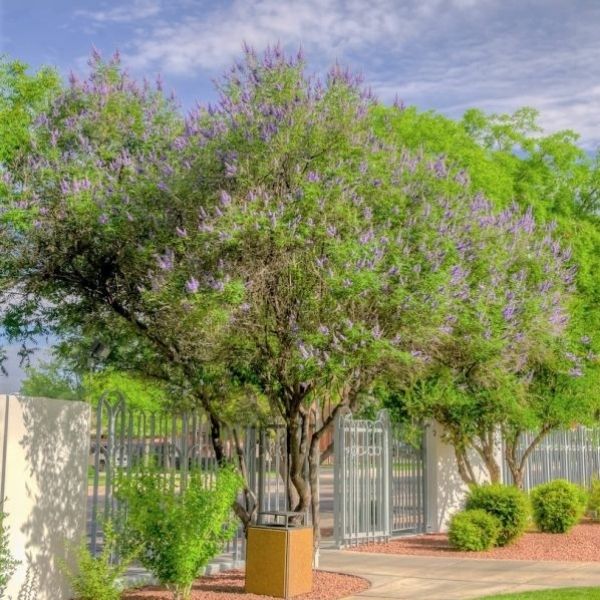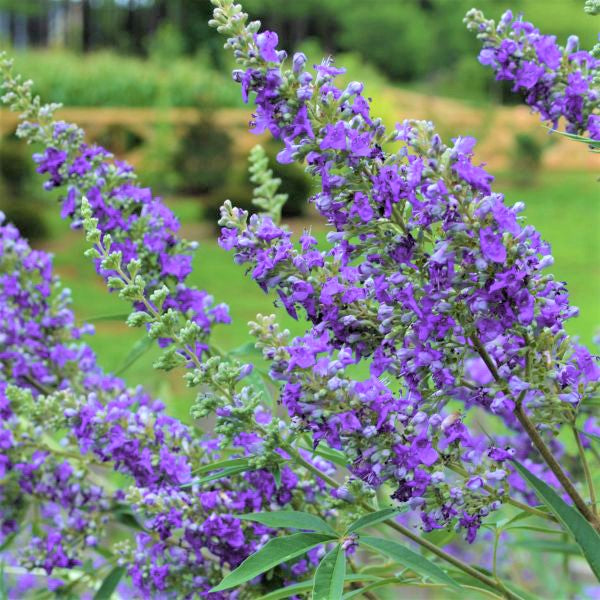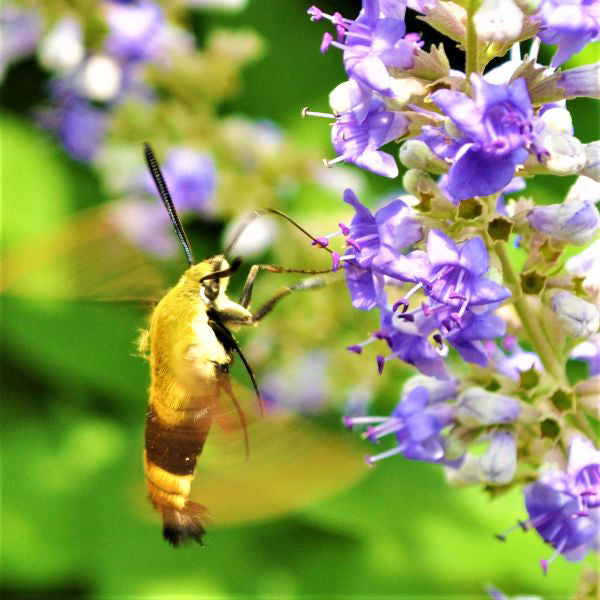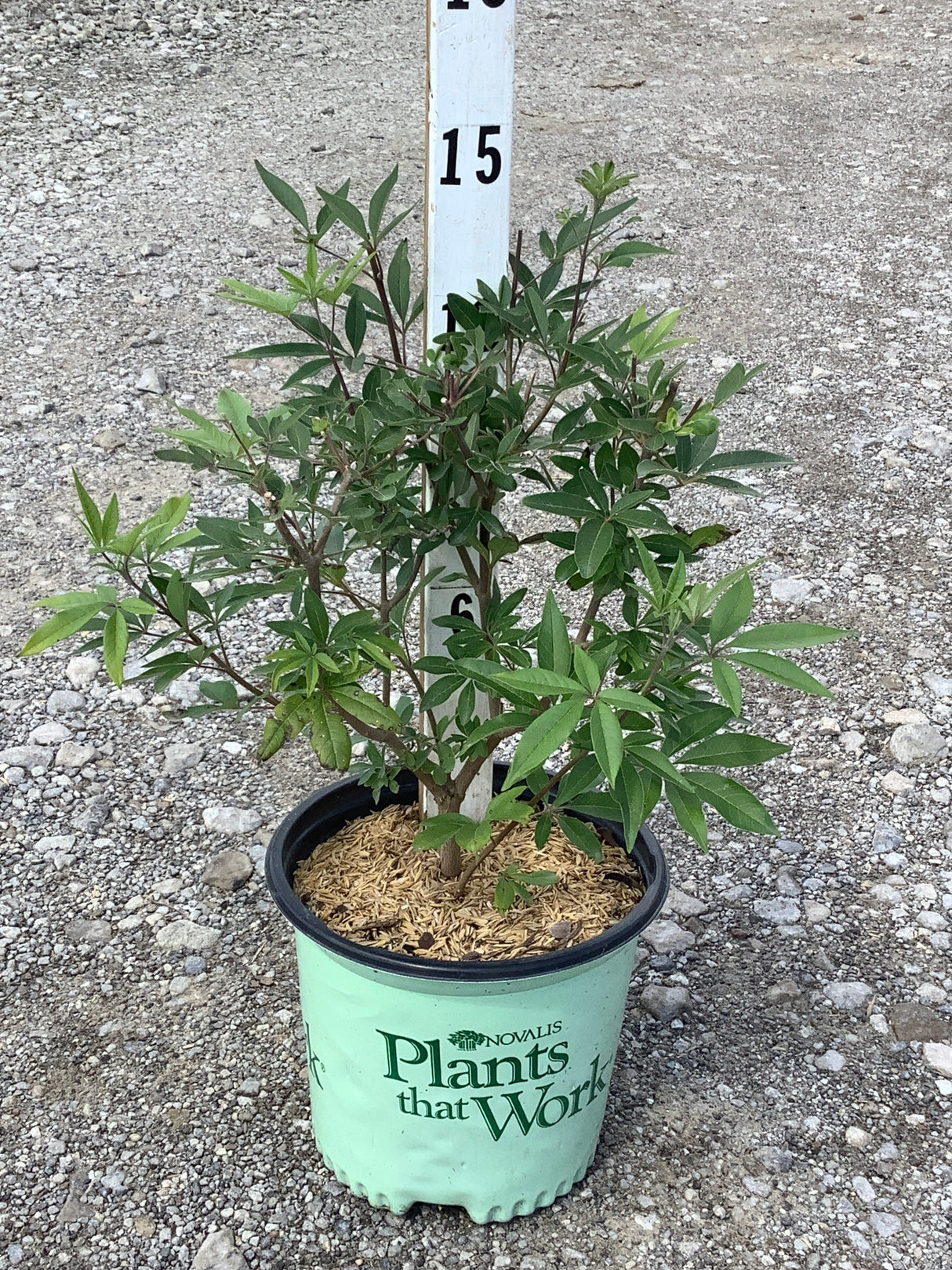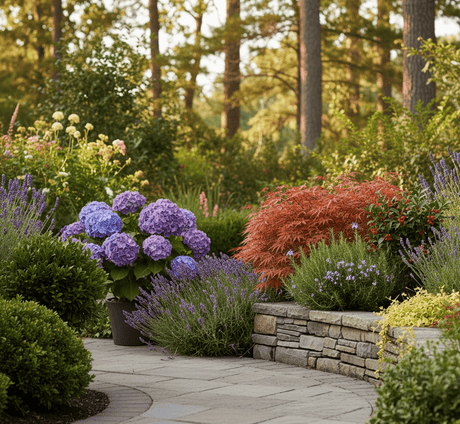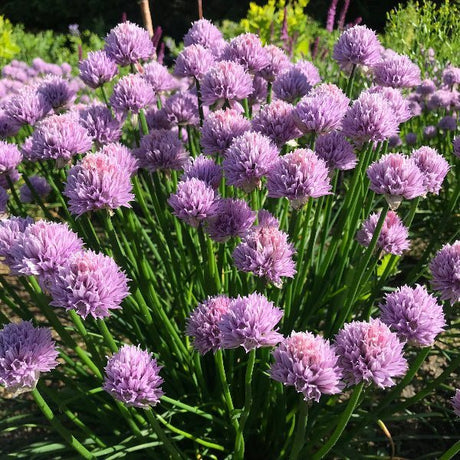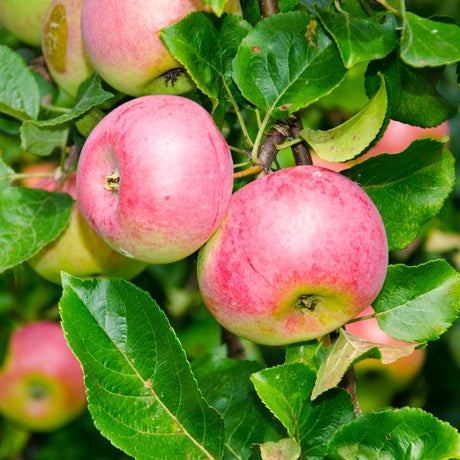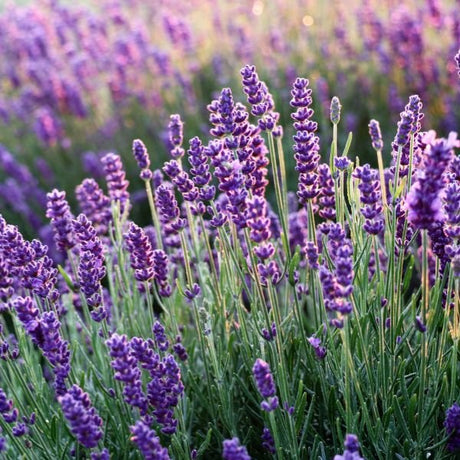Chaste Tree
Vitex agnus-castus
- Stay Protected with Plant Sentry ™
Chaste Tree - Quart Container Shrub Form is backordered and will ship as soon as it is back in stock.
Plant Sentry™
Plant Sentry™

Plant Sentry™ Protected
Your order is protected by our compliance system that:
- Prevents restricted plants from shipping to your state
- Ensures plants meet your state's agricultural requirements
- Protects gardens from invasive pests and diseases
Delivery and Shipping
Delivery and Shipping
Delivery and Shipping
Fast, Safe Plant Delivery
Ships in 3-4 business days • Tracking provided • Weather protected
| Under $50 | $9.99 |
| $50 - $99.99 | $14.99 |
| $100 - $149.99 | $16.99 |
| $150+ | $24.99 |
✓ Zone-specific timing • ✓ Professional packaging • ✓ Health guarantee
Understanding Plant Options
Nature Hills offers plants in two main formats:
- Container Plants: Grown in pots with soil, sized by container volume and plant age
- Bare Root Plants: Dormant plants without soil, sized by height measurements
Container Plant Sizes
Container sizes indicate plant age and growing capacity rather than liquid volume equivalents. Our containers follow industry-standard nursery "trade gallon" specifications, which differ from standard liquid gallon measurements.
Young Plants (6 months to 18 months old)
| Container Size | Actual Volume | Metric Equivalent |
|---|---|---|
| 2" x 2" x 3" | 0.18 - 0.21 dry quarts | 0.20 - 0.23 dry liters |
| 4" Container | 0.31 - 0.87 dry quarts | 0.35 - 0.96 dry liters |
| 4.5" Container | 0.65 dry quarts | 0.72 dry liters |
| 6" Container | 1.4 dry quarts | 1.59 dry liters |
| 1 Quart | 1 dry quart | 1.1 dry liters |
| 5.5" Container | 1.89 dry quarts | 2.08 dry liters |
Established Plants (18 months to 2.5 years old)
| Container Size | Actual Volume | Metric Equivalent |
|---|---|---|
| 2 Quart | 2 dry quarts | 2.2 dry liters |
| #1 Container | 2.26 - 3.73 dry quarts | 2.49 - 4.11 dry liters |
| 5" x 5" x 12" | 3.5 - 4.3 dry quarts | 3.85 - 4.74 dry liters |
Mature Plants (2-4 years old)
| Container Size | Actual Volume | Metric Equivalent |
|---|---|---|
| #2 Container | 1.19 - 1.76 dry gallons | 5.24 - 7.75 dry liters |
| #3 Container | 2.15 - 2.76 dry gallons | 8.14 - 12.16 dry liters |
Large Plants (3-5 years old)
| Container Size | Actual Volume | Metric Equivalent |
|---|---|---|
| #5 Container | 2.92 - 4.62 dry gallons | 12.86 - 20.35 dry liters |
| #6 Container | 5.25 - 6.01 dry gallons | 23.12 - 26.42 dry liters |
| #7 Container | 5.98 - 6.53 dry gallons | 26.34 - 28.76 dry liters |
Bare Root Plants
Bare root plants are sold by height from the root system to the top of the plant. Plants may exceed minimum height requirements.
Common Sizes:
- Trees: 1 foot, 2 feet, 3 feet, 4 feet, 5 feet, 6 feet
- Shrubs & Perennials: 1 foot, 18 inches, 2 feet
Important Notes
Container Volume Specifications
- Trade Gallon Standard: Our containers follow industry-standard "trade gallon" specifications established by the American National Standards Institute (ANSI Z60.1) for nursery stock
- Volume Variations: Actual soil volume may vary due to plant root systems and growing medium settlement
- Age Indicators: Container size primarily indicates plant age and maturity rather than liquid volume equivalents
Growing Conditions
- Plant size can vary based on variety and growing conditions
- Container size helps indicate plant maturity and establishment level
- Larger containers generally mean more established root systems and faster landscape establishment
Seasonal Availability
- Bare root plants are available seasonally when dormant
- Container plants are available throughout the growing season
- Specific varieties may have limited availability in certain sizes
Questions?
For questions about specific plant sizes or availability, please contact our plant experts who can help you choose the right size for your landscape needs.
Plant Highlights
Chaste Tree highlights at a glance!
-
Plant Class
-
Botanical Name
-
Brand
-
Growing Zones6, 7, 8, 9
-
Growth RateFast
-
Mature Height
-
Leaf Color
-
Flower Color
-
Pollinator FriendlyYes
-
Bloom PeriodEarly Summer, Late Summer, Early Fall, Late Fall
-
FragrantYes
Characteristics
Where To Plant
When To Prune
- Late Winter
Water & Moisture Needs
- Low
Sunlight Needs
Soil Needs
- Well-Drained
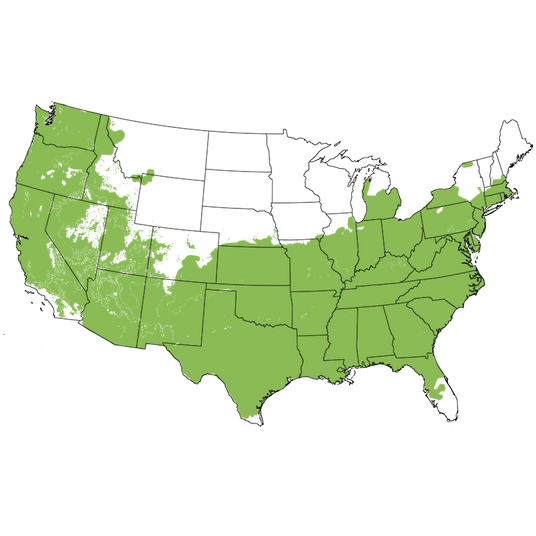
Growing Zones 6-9
Blue Flowering Chaste Tree | Nature Hills
Chase away dull garden days with the bold beauty of the Blue Flowering Chaste Tree (Vitex agnus-castus) that lights up sunny landscapes with blue-purple flower spikes all summer long. This stylish ornamental tree delivers fragrant blooms, true-blue color, palmately divided foliage, and that signature silvery leaf underside that shimmers every time a breeze blows through. A fast-growing, drought-tolerant, fragrant, pollinator-magnet tree with incredible summer staying power, it’s no wonder gardeners fall head over heels for this easy-care treasure. If you love scented plants in the landscape, explore more fragrant bloomers.
With aromatic green leaves that flash silver beneath, a light and airy growth habit, and vigorous multi-trunk form, this standout ornamental adds texture, motion, and nonstop color. Known by other names like Monk’s Pepper and Chastetree, its foliage and historic significance give it layers of charm. Blue spikes continue from the heat of summer into fall, making it one of the longest-blooming flowering trees you can grow.
Native to western Asia and southern Europe, this ancient plant comes with more than 2,500 years of cultural, symbolic, and medicinal history. Celebrated in holistic practices and cherished as a symbol of purity and dedication, it makes an unforgettable gift and a deeply meaningful addition to any garden.
Key Features
A proud member of the Verbena family, it pairs beautifully with pollinator-friendly Perennials, Hydrangea bushes, Smokebush, Ninebark shrubs, Russian Sage, and many more favorites from Ma Nature’s lineup.
- Blue-purple summer flower spikes with a peppery-sage fragrance
- Silvery leaf undersides and aromatic, palmately divided foliage
- Fast-growing, multi-trunk form with an airy canopy
- Drought-tolerant, hardy, and easy to grow
- Attracts butterflies, hummingbirds, and pollinators galore
- Blooms all summer and may rebloom in fall
- Works as a shrub in colder zones or as a small ornamental tree in warmer zones
- Historic symbolism and long cultural heritage
Landscaping Uses
This adaptable deciduous beauty works as a shrub or small tree, fitting effortlessly into many garden styles and sizes. With its upright growth habit and airy canopy, it performs beautifully in both formal and naturalized settings.
- Stunning specimen for front yards or garden beds
- Beautiful multi-trunk focal point in a perennial border
- Light, dappled-shade patio tree
- Hedge or light screen when lower branches fill in
- Container plant in warm climates (requires regular watering)
- Excellent partner for darker foliage shrubs like Smokebush or Ninebark
Care & Maintenance
Generally hardy in USDA planting zones 6 to 9, though many gardeners grow it as a dieback shrub in zone 5. This deciduous ornamental behaves much like an herbaceous perennial in cold climates, resprouting each spring and flowering all summer. Once established, it becomes a drought-tolerant, sun-loving champion that thrives with minimal fuss. Don’t forget to order your Nature Hills Root Booster for lifelong mycorrhizal support.
- Planting Time: Best planted in spring or fall.
- Sun Requirements: Full sun for best flowering and shape.
- Soil Requirements: Needs well-drained soil; tolerates average, sandy, or rocky soils; dislikes poor drainage. Learn what “well-drained” really means here.
- Moisture Needs: Low water once established; water regularly the first year. Use the Finger Test to monitor moisture.
- Arborist Mulch: Apply a 3-4 inch layer of bark chips or mulch as recommended here.
- Fertilization: Light feeding in early spring; compost is beneficial.
- Pruning: Blooms on new wood. Lightly prune before new growth emerges in spring; remove spent flowers to encourage rebloom. Learn about deadheading for more blooms.
- Renewal Pruning: Not typically required, but info on the method is available here.
- Division: Not applicable.
- Special Perks: Deer-resistant foliage, heat-tolerant, handles dry climates, thrives in Xeric conditions.
Read more about caring for these plants here.
A Tree Worth Chasing
If you’ve been chasing after a tree that delivers nonstop blue blooms, historical charm, fragrance, pollinator magic, and easy-care durability, the Blue Flowering Chaste Tree is your perfect match. Treat yourself or someone you love to this meaningful, mesmerizing ornament and let Ma Nature show off her blue magic all summer long.
Order now from Nature Hills and enjoy doorstep delivery at the proper planting time for your growing region.
Frequently Asked Questions
What is the Blue Flowering Chaste Tree used for?
It’s an outstanding ornamental tree for fragrant blue blooms, pollinator attraction, and light shade. Historically, Vitex has been used in supplements for women’s wellness.
How tall does the Blue Flowering Chaste Tree grow?
It typically reaches 15 to 25 feet tall with a similar spread in warm climates.
What does the Chaste Tree smell like?
The leaves and flowers have a peppery, sage-like fragrance, and even the seeds carry that spicy aroma.
Does the Chaste Tree grow fast?
Yes. It is a fast-growing ornamental that quickly develops into a full shrub or small tree.
When will my order ship?
Nature Hills ships according to your local climate and planting conditions to ensure plant health. Your tree will ship at the appropriate time for your region.

